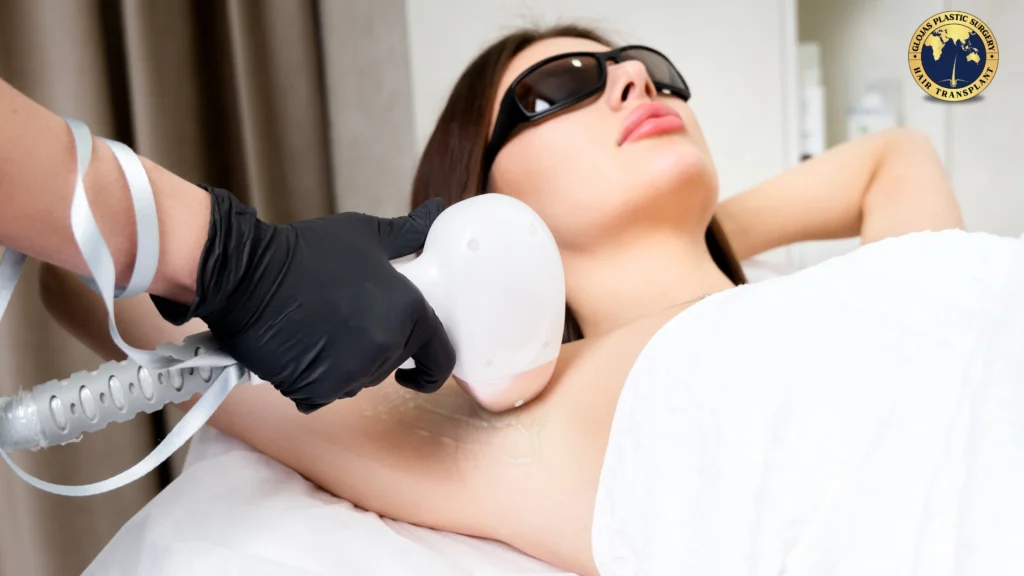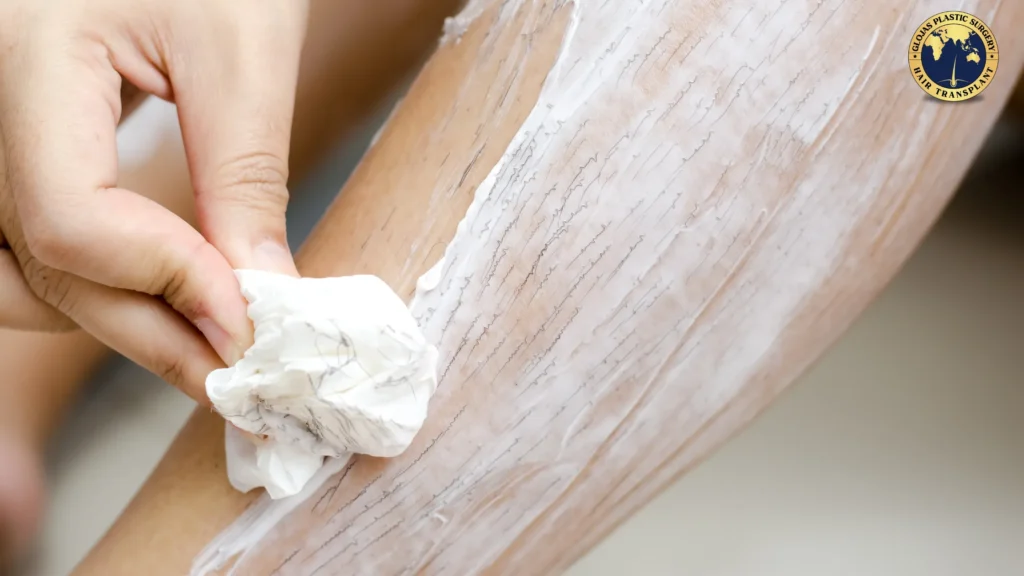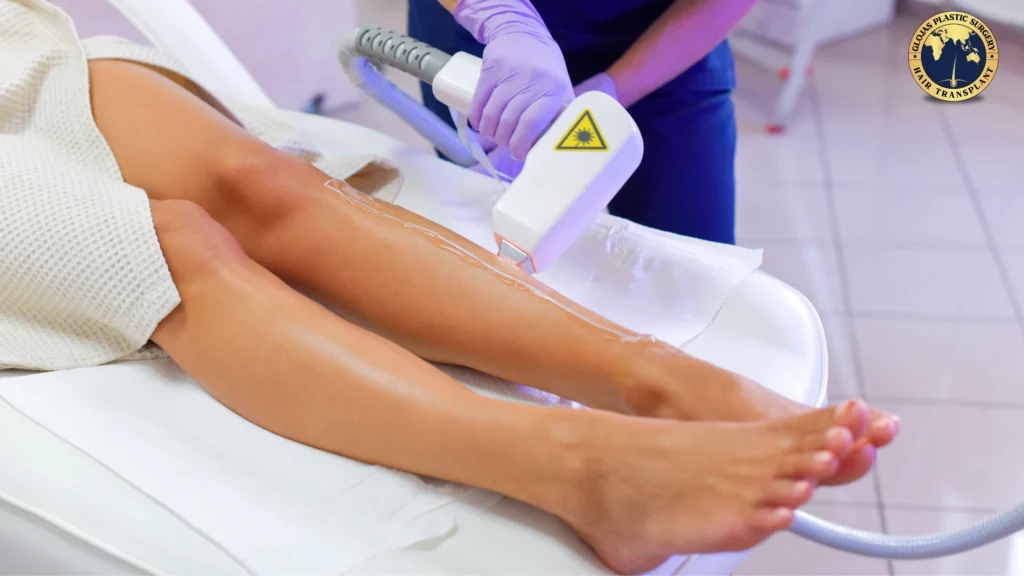Introduction to Permanent Hair Removal
Say goodbye to your razors and wax strips! Permanent hair removal has become a sought-after solution for many individuals tired of traditional hair removal methods. Using laser technology, this procedure targets the hair follicles directly, significantly reducing hair growth without the repetitive need for shaving or waxing.
In this blog, we’ll explore how laser hair removal works, its benefits, potential side effects, and why it might be the right choice for your hair removal needs. Whether you’re looking to treat areas like the underarms, legs, or a more delicate region, understanding this method’s ins and outs will help you make an informed decision.
Permanent Hair Removal Methods
Laser hair removal technology has revolutionized the approach to eliminating unwanted body hair. Unlike traditional methods like shaving, waxing, or using depilatory creams that provide temporary results, laser hair removal offers a more lasting solution. This method uses concentrated light beams to target and destroy hair follicles, which inhibits future hair growth.
Laser Hair Removal

Laser hair removal is a popular aesthetic procedure that reduces hair growth by targeting the pigment in the hair follicles. The laser emits a light that is absorbed by the pigment (melanin) in the hair. The light energy is converted to heat, which damages the sacs within the skin that produce hairs. This damage inhibits or delays future hair growth.
Does Laser Hair Removal Work?
Yes, laser hair removal is effective for most people, but it typically requires multiple sessions to achieve maximum results. Factors such as hair color, skin type, and the growth cycle of your hair affect the success rate. It works best on individuals with darker hair and a lighter skin tone, as the laser targets the pigment contrast. However, advancements in technology have made laser hair removal beneficial for a broader range of skin types and hair colors.
Permanent Hair Removal Cream for Home Use

While laser treatments must be performed by a professional, there are also creams available for home use that claim to permanently reduce hair growth. These creams usually contain chemicals that attempt to inhibit hair growth by acting on the hair follicle.
However, the effectiveness and safety of these creams can vary, and they typically do not provide results as effective or as long-lasting as professional laser treatments. It is essential to follow instructions carefully and consider potential side effects such as skin irritation or allergic reactions.
Diode Laser

The diod laser hair removal is specifically designed for permanent hair removal. It is characterized by a longer wavelength that provides deeper and safer penetration into the skin, making it suitable for various skin types. The diode laser light effectively targets the melanoma in the hair follicle with minimal discomfort, providing a relatively pain-free experience compared to other laser technologies.
Remove Unwanted Hair: Using a diode laser to remove unwanted hair is recognized for its efficiency and effectiveness. It takes several treatment sessions to see significant hair reduction, with each session spaced about four to six weeks apart. This spacing allows the treatment to catch hairs in their new growth phase, ensuring that all follicles are effectively targeted over time.
Hair Follicles: The diode laser specifically targets the hair follicles without damaging the surrounding skin. It is precise in its ability to selectively target dark, coarse hairs while leaving the surrounding skin undamaged.
Laser Hair Removal Risks & Recovery

Risks
Laser hair removal is widely considered a safe procedure, especially when performed by a certified professional depends on type of hair removal. However, like any treatment involving the skin and body, it does carry some potential risks. The most significant of these is the possibility of skin damage. This can range from minor burns or temporary skin discoloration to more severe effects if the laser is not adjusted correctly for the individual’s skin type.
Additionally, there’s a risk of eye injury if proper eye protection is not used during the procedure. It’s crucial to choose a reputable provider who follows strict safety protocols to minimize these risks.
Side Effects
Following a laser hair removal session, some typical side effects may occur. These usually include:
Redness and irritation: The treated areas may feel tender and appear red for a few hours to a few days.
Swelling: Minor swelling around the hair follicles is common but usually subsides within a few days.
Changes in skin color: Some may notice slight lightening or darkening of the skin, particularly if they have either very light or dark skin. These changes are generally temporary.
It’s important to follow all aftercare instructions provided by your technician to help manage and minimize these side effects.
Recovery
The recovery process after laser hair removal is typically straightforward. Most people are able to resume their normal activities immediately. It’s recommended to avoid direct sunlight on the treated area and use a broad-spectrum sunscreen to protect the skin.
Additionally, it may be advised to avoid hot showers, saunas, and exercise for the first 24 to 48 hours to prevent irritation. Following these simple guidelines can contribute to a smooth and quick recovery, making the process convenient for those with busy lifestyles.
Laser Hair Removal Costs
The cost of laser hair removal can vary widely depending on several factors including the size of the area being treated, the number of sessions required, and the geographic location of the clinic. For instance, treating a larger area like the legs or back is typically more expensive than smaller areas such as the upper lip or chin.
Additionally, most individuals need multiple sessions to achieve permanent hair reduction, further influencing the overall cost. Prices can range from a few hundred to several thousand dollars, making it important to discuss these details during your consultation.
In Kuala Lumpur, competitive pricing and package deals are often available, which can make this effective procedure more accessible. Always ensure to choose a reputable clinic that transparently outlines all costs involved to avoid any hidden fees.
Skin

Skin Types for Laser Hair Removal
Laser hair removal can be an effective option for many seeking permanent hair reduction, but its efficacy can vary depending on skin type. Understanding which skin types respond best helps tailor the procedure for optimal results. Typically, the contrast between hair color and skin color plays a significant role.
Dark hair and light skin combinations generally yield the best outcomes because the laser targets the melanin (pigment) in the hair. However, advancements in laser technology have made it possible for individuals with darker skin tones to also see effective results, although they may require more sessions.
It’s essential to consult with a qualified specialist who can evaluate your specific skin type and recommend the most suitable type of laser.
Facial Hair
Removing facial hair with laser technology requires precision due to the sensitivity and visibility of the area. The procedure involves targeting small regions where unwanted hair exists, carefully avoiding damage to the surrounding skin. Common areas for facial laser hair removal include the upper lip, chin, and sideburns.
People choose this method for its long-term results and convenience compared to daily shaving or regular waxing. Pre-treatment care is crucial; specialists often advise avoiding sun exposure and certain skincare products that could interfere with the laser’s effectiveness.
Traditional Method of Hair Removal

Traditional Method
Other hair removal methods such as shaving, waxing, and plucking have been used for years. Shaving provides quick results but can lead to stubble within a day or two. Waxing pulls hair from the root, offering a longer-lasting solution, but it can be painful and cause irritation. Plucking is ideal for small areas but is time-consuming and often uncomfortable. These methods, while temporarily effective, do not offer a permanent solution and require continual upkeep.
Laser Hair Removal vs Traditional Hair Removal
Comparing laser hair removal to traditional methods highlights significant benefits, particularly in terms of long-term results and skin health. Unlike shaving, laser treatment helps reduce hair growth permanently by damaging the hair follicles, which decreases hair thickness and delays re-growth. This can lead to a long-term reduction in hair, and for some, complete permanent removal after several sessions.
Additionally, laser hair removal is less likely to cause skin irritation or the ingrown hairs often associated with shaving and waxing. While the initial cost of laser treatment may be higher, the decrease in the need for continual maintenance can provide cost-effectiveness over time. Moreover, the convenience of not having to regularly remove hair through traditional methods is a considerable advantage for many people.
Conclusion and Recommendations
Laser hair removal offers a promising solution for those seeking to reduce or eliminate unwanted body hair permanently. By targeting the melanin in hair follicles, laser technology disrupts hair growth patterns significantly.
This differs greatly from traditional methods like shaving or waxing, which only provide temporary relief. Laser treatments, while more expensive upfront, can lead to lasting results and reduced hair growth over time.
Selecting the best permanent hair removal method depends largely on your skin type, hair color, and the area you want to treat. Consulting with a professional can provide personalized advice tailored to your specific needs.
In Kuala Lumpur, Malaysia and similar environments, ensure the facility uses the latest technology and follows strict health protocols. Remember to consider factors like long-term costs, treatment duration, and potential side effects when making your decision.
For optimal results from your laser hair removal sessions:
Avoid sun exposure to the treatment area for at least six weeks prior to your session, as tanned skin can complicate the procedure.
Shave the area 24 hours before treatment to prepare the hair follicles.
Follow your specialist’s advice on aftercare, which typically includes avoiding heat and direct sunlight.
Schedule follow-up treatments as recommended to catch multiple hair growth cycles.
By adhering to these guidelines and choosing a qualified professional, you can maximize the effectiveness of your laser hair removal treatments and enjoy smoother skin.


